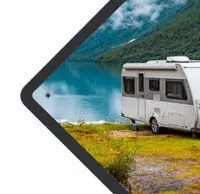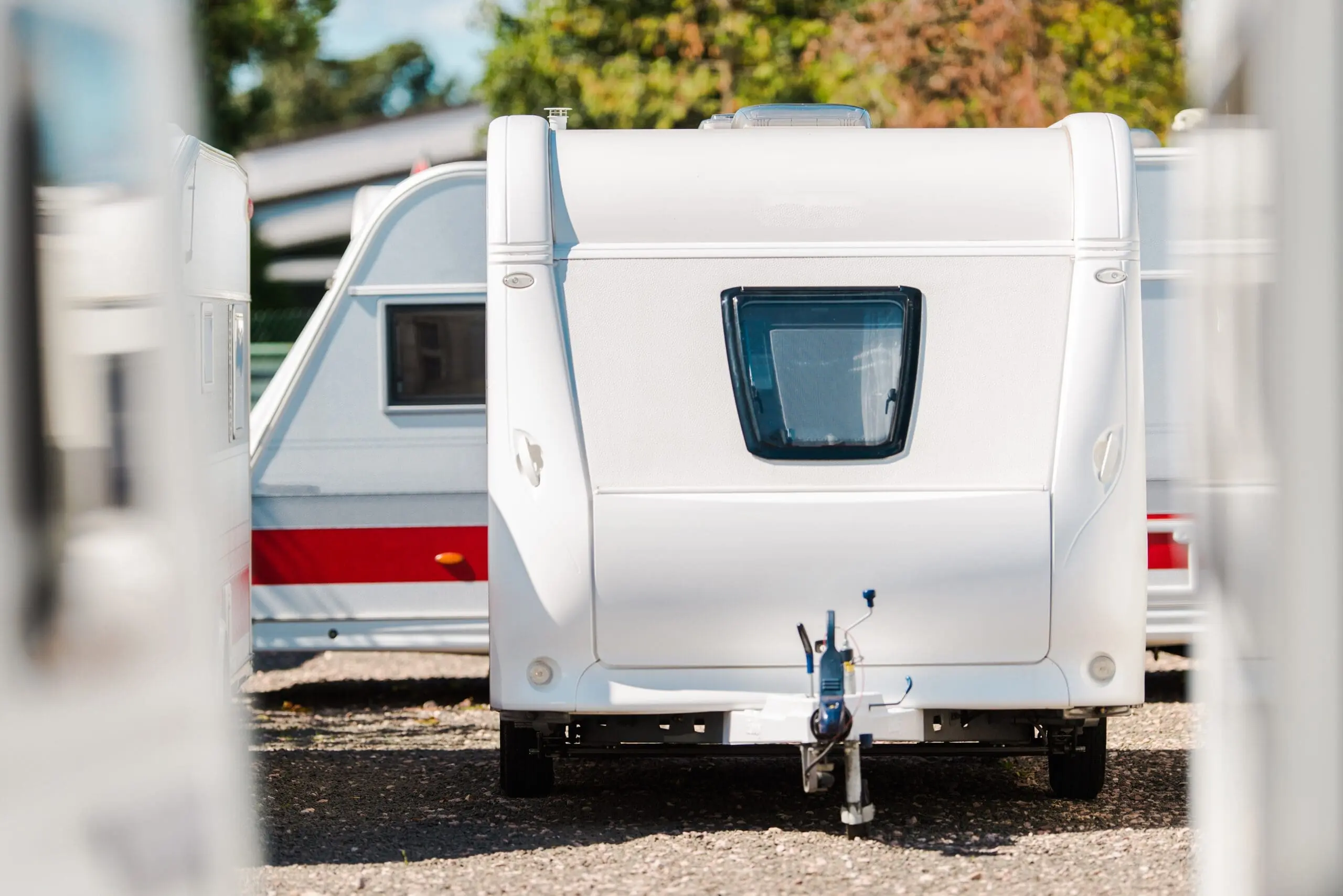Beyond a basic hand tool kit, there are some helpful tools and gear that you don’t want to leave home without. From tools that will make tire changing quick and painless, to DIY supplies that will help you salvage your vacation and get you back to the dealership for a permanent fix, we’re sharing the specialized gear you should add to your RV tool kit. Start with a basic hand tool kit, and then add in our suggestions below.
Bottle jack & wheel nut wrench
If you have a towable RV, be aware that they don’t come with a jack or wheel nut wrench. This will leave you in a hard spot if you find yourself with a flat tire! We recommend bottle jacks for this job as they are relatively inexpensive and compact. Be sure to select one with the proper weight rating for your RV. As you travel, use your wheel nut wrench periodically to check that the wheel nuts are tight.
Upgrade for larger RVs: If you have a large RV, we suggest you go one step further and add a tire changing wheel chock to your gear. If your fully-loaded, triple axle, 45’ trailer gets a flat tire, jacking that weight can be a real challenge! With a tire changing wheel chock, all you need to do is place the small end of the chock under the closest good tire and drive up, and you’re ready to change the tire. We like that they also double as a wheel chock.
Tire gauge & portable air compressor
If you’ve ever tried to manoeuvre your large trailer over to a gas station’s out-of-the-way air compressor, you know why a portable air compressor made the list! By packing your own tire gauge and portable air compressor, you’ll be able to keep an eye on your tire pressure and top up when needed.
Manual slide-out tool
Do you know how to manually operate your slide-out? If you discover that your slide mechanism is malfunctioning, whether that be a dead battery or broken motor, you’ll need to use the manual crank. Some RVs will have a handle included, but others will just be a socket nut that you may or may not have the proper-sized wrench for. To avoid this situation, familiarize yourself with how your RV’s manual crank works, and be sure to travel with the right tool. This advice applies to power awnings as well.
Multimeter
If you’re comfortable working with your electrical system, a multimeter is great to have on hand. It will enable you to troubleshoot malfunctioning appliances, and check that the connection between your tow vehicle and trailer is functioning at proper levels. Trailer plugs are often damaged from exposure to the elements, so it is good to keep an eye on this connection.
Spare lightbulbs and fuses
Self-explanatory, but easy to forget until you find yourself in need of one! Add a few to your kit for quick changes on the go.
The right sockets
If your RV’s hot water heater has a drain plug with anode rod, it’s important to add a 1 1/16 size socket to your tool kit. This size isn’t usually included in a basic set.
DIY supplies
Keep a few DIY supplies at hand that will help you improvise fixes for unforeseen projects. We recommend a roll of duct tape, rope, string, and a roll of light, multipurpose wire such as hay-wire.
Awning tape
While we’re big fans of the versatility of duct tape, it’s not always the best solution! We recommend awning tape for fabric repairs. It is clear and very strong, making it perfect for patching not only awning fabric, but also sidewalls, vehicle seats and even rain boots.
Roof repair tape
This specialty tape is a great, on-the-go, temporary repair product for roof damage. Unlike awning or duct tape, the underside of the roof tape has a putty sealant that ensures a watertight fix. It is great for sealing roof and vent seams, as well as any tears in the roof membrane, allowing you to enjoy your holiday and preventing further damage until it can be brought in for a permanent repair.
Nice-to-have additions to your tool kit
Space permitting, here are a few tools that you’ll find very useful on the road!
Cordless drill: With the proper attachment, a cordless drill makes cranking manual jacks a breeze! It will also come in handy for any quick repairs on the road, like replacing a vent.
Caulk & caulking gun: Good to have on hand if any resealing is needed.
Lubricant: We recommend a silicone-based lubricant for the awning, steps, jacks, and more.
Compact folding ladder: Great to have if you need to do a roof repair, a compact folding ladder will fit into most RV storage compartments.
What do you always keep on hand for on-the-road repairs? Let us know in the comments or let us know on Facebook or Instagram.

















